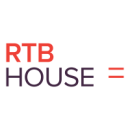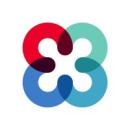There are many metrics customer success managers track to keep a pulse on client relationships — but some are more insightful than others.
At Braze, Principal Customer Success Manager Orlando Beakbane and his peers rely on sophisticated reporting dashboards that enable customer success leaders and CSMs to more effectively manage and mitigate churn risk and create playbooks that outline next steps when dealing with a particular client.
“These dashboards empower each CSM to take ownership of their book of business while providing the insights that truly matter,” he said.
Meanwhile, U.S. Director of Client Partners Bryan Hernandez and his teammates at RTB House lean on regular check-ins with clients to stay ahead of potential issues, ensuring internal benchmarks align with each client’s business needs.
“More than just monitoring data, these conversations allow us to proactively adjust strategies, address concerns and reinforce our commitment to their success — ultimately strengthening the relationship and reducing churn risk,” he explained.
Some CSMs lean on external tools to gain deeper customer insights — including Lindsay Becker, a CSM at Mirakl. She leverages the Dust platform to create AI agents tailored to each client, which analyze public information and internal data pulled from Zoom meeting notes and other sources.
“This AI system helps me track client sentiment and address potential issues precisely before they escalate,” Becker said.
Regardless of the approach taken, every CSM is guided by the same aim: to meet customers’ needs — and stop churn in its tracks. Read on to see what else Beakbane, Hernandez, Becker and four other customer success professionals had to say about how they gauge customer satisfaction and the steps they take when working with high-risk clients.
Featured Companies
Braze is a customer engagement platform that powers lasting connections between consumers and brands they love through cross-channel messaging and journey orchestration to Al-powered experimentation and optimization.
What are the key metrics you track when it comes to your customers? Are there any “outside-the-box” metrics you track?
One of the joys of working in customer success at Braze is the wealth of data points available for analyzing customer health and sentiment. However, the challenge lies in prioritizing this data to identify the metrics that have the most significant impact.
The primary metrics we monitor focus on customer health and sentiment, which we assess through qualitative feedback from CSMs and increasingly through quantitative health scores. These scores are derived from modeled calculations — did someone say AI? — of customer behavior, such as changes in dashboard login patterns.
“The primary metrics we monitor focus on customer health and sentiment, which we assess through qualitative feedback from CSMs and increasingly through quantitative health scores.”
Which metrics do you prioritize when identifying accounts that might be in danger of churning?
As a CSM, there is a vast array of metrics to prioritize, ranging from dashboard activity and customer maturity to platform adoption and the number of learning courses completed on Braze Learning. Braze Learning is a suite of training programs and resources that helps empower customers through exceptional educational experiences that enhance their understanding of the Braze platform, fostering continuous growth to optimize customer engagement strategies and achieve impactful results.
At Braze, we are fortunate to have an exceptional customer success operations team that has developed sophisticated reporting dashboards. These dashboards empower each CSM to take ownership of their book of business while providing the insights that truly matter. These metrics enable the customer success leadership team and each CSM to identify where to focus their time and energy to manage and mitigate churn risk, as well as to create playbooks that support CSMs in determining their next steps.
Give an example of how you used this data to tailor your reengagement strategy or otherwise improve/nurture customer relationships.
At Braze, we are always mindful of the unique requirements of our diverse customer base. With customers ranging from large global brands to one-person startups, it is crucial that we engage with each customer in a manner that suits their specific needs.
This commitment means we avoid a one-size-fits-all approach. Over time, we have developed teams and operating models that effectively serve our various customer classifications. This includes large teams managing high-touch engagements with customers as well as more scalable approaches for our small- to medium-sized businesses teams. This diversity and ongoing evolution are just a few of the many reasons why Braze is such a dynamic and stimulating environment to work in. After six years, I still encounter new challenges to tackle alongside our customers.
RTB House’s full-funnel marketing platform, powered by deep learning, is designed to enable brands to deliver targeted campaigns across a wide range of digital channels.
What are the key metrics you track when it comes to your customers? Are there any “outside-the-box” metrics you track?
At RTB House, we track a combination of traditional and unique metrics to monitor account health and customer success. A key component of our approach is our annual customer experience surveys, complemented by a culture of proactively requesting client feedback through calls, in-person meetings and quarterly business reviews.
Beyond standard performance metrics, we also measure activities that strengthen client relationships, such as the frequency of in-person meetings with account teams and decision-makers, client entertainment engagements, QBR participation and case study collaborations. To ensure ongoing visibility, we leverage in-house customer relationship management software for documentation and maintain dedicated Slack channels for each account, where we share weekly performance reports, post-call summaries and key client insights. This approach allows us to track not just quantitative results but also qualitative relationship-building efforts — ensuring a holistic view of customer success.
“To ensure ongoing visibility, we leverage in-house customer relationship management software for documentation and maintain dedicated Slack channels for each account, where we share weekly performance reports, post-call summaries and key client insights.”
Which metrics do you prioritize when identifying accounts that might be in danger of churning?
To identify accounts at risk of churning, we focus on the key metrics that matter most to each client. Every business has unique challenges and goals, so alignment on key success metrics is the first critical step. If engagement drops, performance trends downward or key KPIs aren’t being met, these are early warning signs that require immediate attention.
Regular check-ins help us stay ahead of potential issues by ensuring our internal benchmarks remain in sync with the client’s evolving business needs. More than just monitoring data, these conversations allow us to proactively adjust strategies, address concerns and reinforce our commitment to their success — ultimately strengthening the relationship and reducing churn risk.
Give an example of how you used this data to tailor your reengagement strategy or otherwise improve/nurture customer relationships.
When performance data indicates that a client’s key KPIs aren’t being met, we see it as an opportunity to strengthen the relationship. We begin by asking two key questions: Are we doing everything possible to achieve these goals, and are the goals realistic? An internal audit helps us evaluate service levels, conduct a technical review, and assess overall performance. If we confirm that our product and team are delivering at their best, we engage the client in an open conversation. By proactively realigning expectations, adjusting strategies and offering tailored recommendations, we demonstrate our commitment to their success. This transparent, collaborative approach not only improves performance but also builds trust, reinforcing the partnership and deepening long-term engagement.
NinjaOne’s automated endpoint management platform is designed to help IT teams and managed service providers increase productivity, reduce security risks and lower costs.
What are the key metrics you track when it comes to your customers? Are there any “outside-the-box” metrics you track?
We look at a mix of core and deeper-dive metrics to stay in tune with our customers. The net promoter score helps us understand overall satisfaction and loyalty. It’s a quick pulse check on how we’re doing. The customer satisfaction score zooms in on specific interactions, whether with support or the product itself, to gauge how those moments are landing. Churn rate and retention rate are two sides of the same coin — they show us how well we’re keeping customers around and why some might leave.
We also look at how customers are actually using NinjaOne. Our product adoption score gives us a sense of whether customers are diving into the more advanced features, which usually means they’re getting more value. Engagement metrics like login frequency, usage depth and active days help our success team know how engaged someone is and how we can support them better. These kinds of usage insights are super helpful. They’re not just about numbers — they help us figure out the right timing and approach to connect.
“Engagement metrics like login frequency, usage depth and active days help our success team know how engaged someone is and how we can support them better.”
Which metrics do you prioritize when identifying accounts that might be in danger of churning?
Engagement data is usually the first flag. If we see a drop in logins or a customer stops using key features, that tells us something might be off. A spike in support tickets or complaints is another sign. Too many issues can lead to frustration, which might cause a customer to leave. Billing behavior is also something we keep an eye on. If payments are delayed or missed, it could mean financial concerns or waning commitment. And of course, when it comes time to renew and there’s hesitation or delays, we take that seriously. It usually means we need to reestablish value quickly.
Give an example of how you used this data to tailor your reengagement strategy or otherwise improve/nurture customer relationships.
Absolutely. When we see a dip in engagement or signs of friction, our customer success team steps in with a personalized approach. It could be a phone call or a thoughtful email offering support, a one-on-one session or just checking in to see how things are going. We also make a point to highlight new product features that directly address their needs; sometimes, customers don’t even realize how much more value they could be getting. In some cases, an account manager will schedule a dedicated check-in just to listen, gather feedback and talk through any concerns. It’s about showing the customer they matter, not just fixing a problem. It makes all the difference.
Mirakl’s platform is designed to help retailers and B2B businesses digitize and expand product assortment, improve efficiency in supplier catalogue management and payments, personalize shopping experiences and boost profits through retail media.
What are the key metrics you track when it comes to your customers? Are there any “outside-the-box” metrics you track?
In customer success at Mirakl, I track several key metrics to understand client health. The net promoter score helps measure client satisfaction, while I also monitor platform adoption rates, time to value and renewal indicators.
Beyond this, my “outside-the-box” approach involves leveraging AI to gain deeper customer insights. Using the Dust platform, an AI workspace that allows us to build custom intelligence tools, I’ve crafted AI agents tailored to each client. These agents analyze public information as well as internal data from our interactions, whether that’s from Zoom meeting notes, Slack messages, or emails, as well as presentation materials and support tickets. This AI system helps me track client sentiment and address potential issues precisely before they escalate.
“Using the Dust platform, an AI workspace that allows us to build custom intelligence tools, I’ve crafted AI agents tailored to each client.”
What makes this approach valuable is how it transforms raw data into actionable insights while maintaining data security. By leveraging these advanced tools, I continuously seek new ways to enhance my interaction with my clients and ensure personalized support. This combination of traditional metrics and AI-enhanced intelligence helps me ensure high satisfaction and build stronger partnerships with my customers.
Which metrics do you prioritize when identifying accounts that might be in danger of churning?
To identify accounts at risk of churning, it’s crucial to uncover the underlying issues. Beyond using NPS as an early warning sign, I concentrate on three key areas:
First, I lean on direct client interactions. I analyze communication patterns and engagement trends during meetings and emails. Using client-specific AI built with Dust, I can track communication nuances, subtle changes in sentiment or engagement that often precede churn.
Second, I use support tickets. I monitor not just volume but also the nature and urgency of issues. Innovative tools from our team, like a Zendesk agent, identify urgent tickets and analyze sentiment, allowing us to escalate issues swiftly and address potential concerns.
Third, I look at product enhancement requests. I track how effectively we’re addressing clients’ needs and managing expectations. Our internal tools provide transparency on timelines and progress for requests, enabling us to manage client expectations and help them feel heard and valued.
By leveraging these insights, we can proactively engage with clients to address their concerns effectively, thereby mitigating churn risks.
Give an example of how you used this data to tailor your reengagement strategy or otherwise improve/nurture customer relationships.
I worked with a retail client who frequently utilized promotions and required scalable tools to enhance their strategy. While Mirakl offers robust promotional capabilities, some weren’t meeting their unique needs. By monitoring support tickets, I identified frustration with manual promotion processes. Their enhancement requests highlighted a specific feature that wasn’t on our roadmap. Using our internal AI tools, I analyzed patterns across their communications and support interactions to gain a comprehensive view of their challenges.
As renewal approached, I anticipated this would be critical. I proactively crafted a three-part plan: acknowledging the product gap, proposing a practical workaround and escalating their request internally with metrics showing business impact, which secured prioritization. Sharing this analysis with the client demonstrated our commitment to their success, leading to a confident renewal. This approach not only addressed their immediate concerns but also strengthened our partnership by ensuring their voice was heard and acted upon, ultimately leading to a confident renewal.
Hospitals and health systems can use TigerConnect’s platform to simplify clinical and patient communication.
The Key Metrics Tinker Tracks When it Comes to Customers
- “Customer Health Score: A composite metric factoring in engagement, product adoption, sentiment and known competitive risk.”
- “Customer Maturity: This helps us understand how deeply a customer is using our platform’s capabilities, including which personas are engaged and the complexity of their workflows.”
- “External Signals: We layer in publicly available data, such as updates from the Centers for Medicare and Medicaid Services and relevant news, to stay proactive about strategic shifts or initiatives that may create new opportunities to support our customers. By combining behavioral, relational and contextual data, we gain a 360-degree view of the customer and can act with more precision.”
Which metrics do you prioritize when identifying accounts that might be in danger of churning?
We focus on customer maturity and engagement trends as leading indicators of churn risk. If an account is using only basic features — or key roles are disengaged — it signals a potential disconnect between our value and their evolving needs.
For example, if a customer hasn’t implemented automation or advanced workflows, we know they may not be realizing the full potential of the platform. This prompts us to explore where education, enablement or broader stakeholder engagement might realign the relationship and deepen value perception.
“We focus on customer maturity and engagement trends as leading indicators of churn risk.”
Give an example of how you used this data to tailor your reengagement strategy or otherwise improve/nurture customer relationships.
We used external data to cohort customers by shared characteristics, such as their electronic health record system, and then analyzed trends in customer maturity, particularly around integration and workflow adoption. This revealed common strengths and maturity gaps across the group.
With those insights, we’re developing tailored engagement strategies and roadmaps aimed at advancing maturity across each cohort. This proactive, data-driven approach not only accelerates platform adoption but also deepens and broadens relationships, helping us drive long-term value at scale.
Greenlight Guru’s platform is designed to help medical device companies build products more efficiently and maintain compliance.
What are the key metrics you track when it comes to your customers?
Some of the traditional metrics that we track include utilization and monthly active users. Ideally, of course, a client should be engaged throughout all or most facets of the platform, and their users should be logging in on a consistent basis.
Chacha’s ‘Out-of-the-Box’ Metrics
- “Number of support tickets and live chat inquiries submitted through ZenDesk: How often are they reaching out? Who is reaching out? Are there any common themes? While our support team does a great job of handling these inquiries, our CSMs do a great job of learning about each customer’s touchpoint with the company and using that information in our own client interactions to enhance the customer experience.”
- “Number of meetings and email interactions: This helps me measure engagement levels.”
- “Executive-level engagement: When and how often have we connected with exec-level members of the company?”
Which metrics do you prioritize when identifying accounts that might be in danger of churning?
It’s all about identifying red flags, which could be one or a combination of events. I like to track monthly active users and the days that have passed since the last meeting was held or the last email was sent from the client. For MAUs, if I notice a big decrease, it’s an alert for me to uncover if something has changed at the company that caused the decrease.
If a client has gone more than 60 to 90 days since attending a meeting or sending us an email, I prioritize making a connection with the client to uncover any potential churn risk. One key thing to note here is to always have something of value to deliver to the client you’re reaching out to. 60 to 90 days with no contact may not automatically mean it’s a churn risk, but it highlights an opportunity to have a stronger customer success/client relationship, which can help with identifying future churn risks.
“One key thing to note here is to always have something of value to deliver to the client you’re reaching out to.”
Give an example of how you used this data to tailor your reengagement strategy or otherwise improve/nurture customer relationships.
Connecting data with “non-data” sources as a way to drive action from a client is a strategy that I sometimes lean on. I once had a client that was historically unresponsive with our company, which made it difficult to forecast their renewal intention. Their usage and MAUs metrics were healthy, which was a good sign, but our relationship had gone stagnant. I dug in a little deeper to uncover not only how many users were logging in but who was logging in. Combining that information with research on LinkedIn to uncover the users’ job titles, I created email outreaches to power users with tailored specific messaging and call to actions. I was able to book two calls with five members of the organization, which served as the springboard toward improving the client relationship.
Bringg’s platform is designed to help retailers and carriers optimize and grow their last-mile delivery, enabling them to reduce costs, increase order capacity and drive brand loyalty.
What are the key metrics you track when it comes to your customers? Are there any “outside-the-box” metrics you track?
While we certainly track traditional product metrics like usage, feature adoption and platform utilization, our true North Star is measuring our customers’ business outcomes. We work closely with each customer to understand their strategic objectives, whether that’s reducing operational costs, meeting customer expectations or accelerating time to market, and establish specific metrics tied to those goals. For example, rather than just looking at how often a feature is used, we measure whether it’s actually delivering the efficiency gains or cost savings the customer expected. This outcomes-based approach helps us stay focused on genuine business impact rather than just metrics. It also enables more strategic conversations with our customers around success planning, as we can demonstrate concrete return on investment and value realization aligned with their priorities.
“We work closely with each customer to understand their strategic objectives, whether that’s reducing operational costs, meeting customer expectations or accelerating time to market, and establish specific metrics tied to those goals.”
Which metrics do you prioritize when identifying accounts that might be in danger of churning?
Since we closely track our customers’ business outcomes, potential risk signals often emerge when we see gaps between expected and actual results. First, we monitor if customers are achieving their defined business objectives, whether that’s the expected cost savings, productivity gains or other strategic goals we established together. Any significant deviation from these targets is a critical signal that requires immediate attention. Beyond this, we look at engagement patterns across different organizational levels. A healthy account typically shows active participation from both end users and executive sponsors.
When we see declining executive engagement or unattended QBRs, especially combined with reduced platform usage, it often indicates the customer might not be seeing their expected value. Most importantly, we’ve learned that churn rarely happens suddenly; it’s usually preceded by months of subtle indicators. That’s why we’ve moved away from relying solely on lagging indicators like declining usage, and instead prioritize these leading indicators of business value realization.
Give an example of how you used this data to tailor your reengagement strategy or otherwise improve/nurture customer relationships.
Recently, we identified that one of our enterprise customers was showing mixed signals; while their platform usage remained steady, they weren’t achieving their target cost reduction goals that were established during onboarding. What was more concerning was that their executive sponsor had missed two QBRs. We decided to take a more strategic approach. We ran an internal “health check” and analyzed their usage patterns, which showed they were primarily using basic features while overlooking advanced automation capabilities that could deliver significantly more value. However, the root cause wasn’t product knowledge — it was organizational readiness.
We shifted our engagement strategy to focus on change management and business process alignment. Working with their team leads, we conducted workflow mapping sessions to identify optimization opportunities, established interim success metrics to demonstrate progress and developed executive-level reporting that clearly tied our solution to their strategic initiative.The key lesson was that declining engagement often isn’t about the product itself — it’s about ensuring our solution remains aligned with the customer’s business.


















